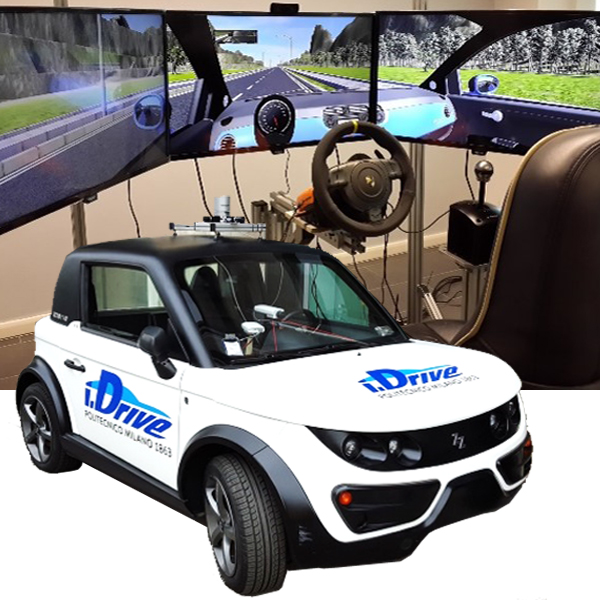The laboratory aims at developing inter-disciplinary proficiency required for the analysis and modelling of behavioral aspects due to the interaction between driver, vehicle, infrastructure, and environment through:
- A fixed structural component based on a virtual realty simulator aimed at the ex-ante test of expected behavioral models, the joined optimization of vehicle and road infrastructure, the increase of ex-post and in-itinere statistical significance ofexperiments carried out on roads;
- A mobile component based on an instrumented vehicle aimed at measuring on field performance and reactions of drivers in different driving conditions and at collecting environmental data to be reproduced ex-post by simulation.
In addition to the study of drivers and the impact that road infrastructures have on him/her, the laboratory allows us a series of new studies which include the many fields where the University already develops research activities.
For the sake of example, some possible research activities which the laboratory can carry out after its establishment are reported below:
- Functional analyses of road transport infrastructures and their interaction with driver from the point of view of stress, fatigue, workload and driving attention;
- Evaluation of tools for driver monitoring from the point of view of their effectiveness and also of driver subjective perception;
- Simulation through virtual simulation of driving scenarios in urban contexts and evaluation of driver and passenger physiological reactions;
- Implementation of procedures for special driving (e.g. assisted or autonomous driving systems) and study of the reactions of drivers in relation with their choices in real contexts;
- Execution of surveys of diverse types through the equipped vehicle, among whom: dynamic surveys of traffic, urban and rural topographic surveys, carrying out specific campaigns for surveying urban emissions of buildings through heat sensors on scales today not yet feasible otherwise;
- Study of driver workload in crossing roundabouts (or other crucial points of road network) through simulation in virtual reality.

